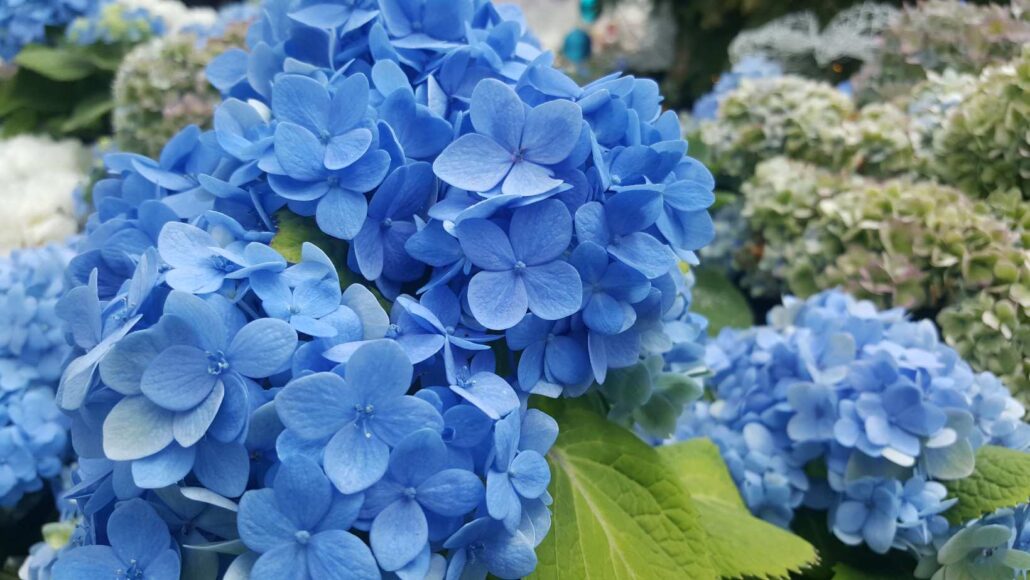
Prune Hydrangeas, beloved for their exquisite blossoms, have gained popularity as flowering shrubs. However, without proper pruning, these shrubs can become overgrown and exhibit diminished flower production. Engaging in the crucial task of pruning hydrangeas holds significant benefits, enhancing the plant’s well-being, fostering fresh growth, and stimulating abundant blooms. Nonetheless, it is essential to approach hydrangea pruning with care, as various hydrangea types necessitate distinct pruning techniques.
If you find yourself uncertain about the proper way to prune your hydrangeas, this article is here to assist you. Within this comprehensive guide, we will provide you with a step-by-step process for effectively pruning your hydrangeas. Our guidance encompasses helpful tips on identifying the specific type of hydrangea you possess and executing correct pruning techniques accordingly.
The right way to prune hydrangeas
Step 1: Determine the type of hydrangea you have
Pruning techniques vary depending on the specific type of hydrangea. Hydrangeas can be categorized into four main types: mophead (Hydrangea macrophylla), lacecap (Hydrangea macrophylla), panicle (Hydrangea paniculata), and smooth (Hydrangea arborescens). Prior knowledge of your hydrangea’s type is crucial before undertaking pruning tasks, as it ensures that you avoid inadvertently removing buds or flowers that play a vital role in the plant’s growth.
Step 2: Identify dead, damaged or diseased wood
To enhance the plant’s overall health, it is advisable to utilize pruning shears to eliminate any dead, damaged, or diseased wood. This proactive measure contributes significantly to the plant’s well-being and vitality.
Step 3: Remove old wood (if necessary)
To promote new growth and maximize flower production in mophead and lacecap hydrangeas, it is recommended to prune out any old wood that is older than three years. By doing so, you create space for fresh growth and stimulate the emergence of more vibrant flowers. In the case of panicle hydrangeas, you have the flexibility to remove up to half of the previous year’s growth. This pruning approach encourages an abundance of blooms, allowing the plant to showcase its full potential.
Step 4: Cut back to healthy buds
When pruning, ensure to make the cut just above a healthy bud, leaving a minimum of two pairs of buds on each stem. This technique fosters the development of new growth and facilitates an increased number of flowers. Additionally, make the cut at a 45-degree angle, as it promotes proper healing and prevents water from accumulating on the cut surface. By following these guidelines, you optimize the pruning process for the hydrangeas’ benefit.
Step 5: Don’t over-prune
Exercise caution to avoid excessive pruning, as it can impede the plant’s growth and diminish its flower production. It is advisable to limit the removal of plant growth to approximately one-third of its total in a given year. By adhering to this prudent approach, you maintain a healthy balance that allows the hydrangea to flourish and showcase an abundant display of flowers.
Allow me to share some supplementary tips to assist you in pruning hydrangeas:
1. Timing: Understanding the specific timing for pruning your hydrangeas is crucial. Different hydrangea types have varying optimal pruning periods. Research and identify the appropriate time to prune your particular hydrangea species for optimal results.
2. Remove Weak Stems: During the pruning process, be sure to identify and remove any weak or spindly stems. This action promotes healthier growth and directs the plant’s energy towards stronger, more robust branches.
3. Clean and Sharpen Tools: Prior to pruning, ensure that your pruning tools are clean and properly sharpened. Clean tools help minimize the risk of spreading diseases, while sharp blades facilitate cleaner cuts and promote faster healing.
4. Consider Hydrangea Size: Take into account the mature size of your hydrangea when pruning. If your hydrangea tends to grow larger, leave ample space between branches to prevent overcrowding and promote air circulation.
5. Observe Flowering Patterns: Familiarize yourself with your hydrangea’s flowering patterns. Some hydrangeas bloom on new wood, while others bloom on old wood. Understanding this distinction will guide you in deciding the appropriate pruning approach.












